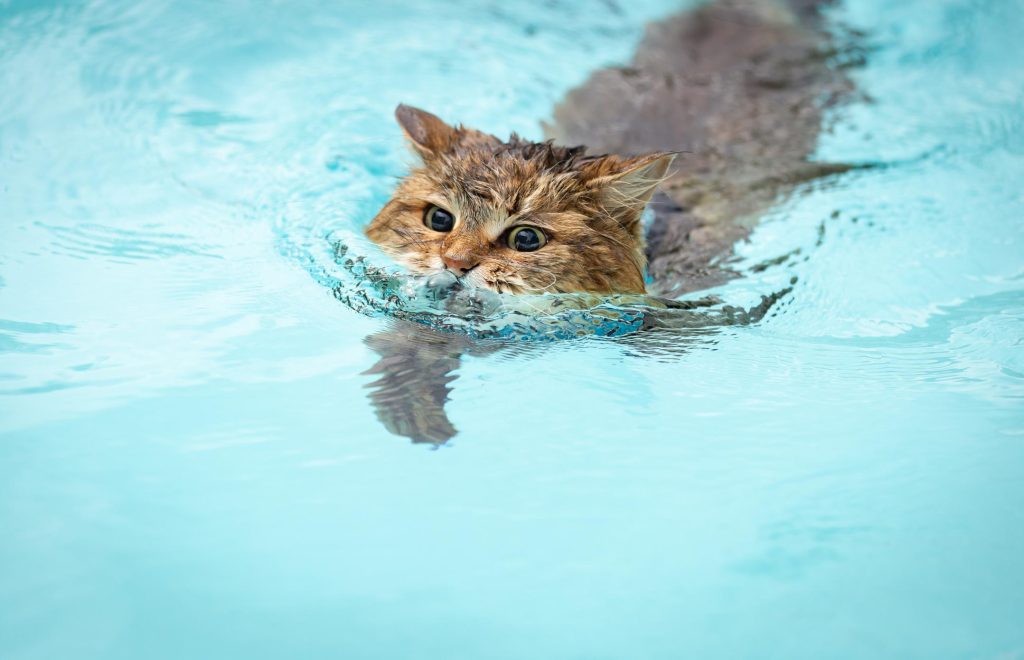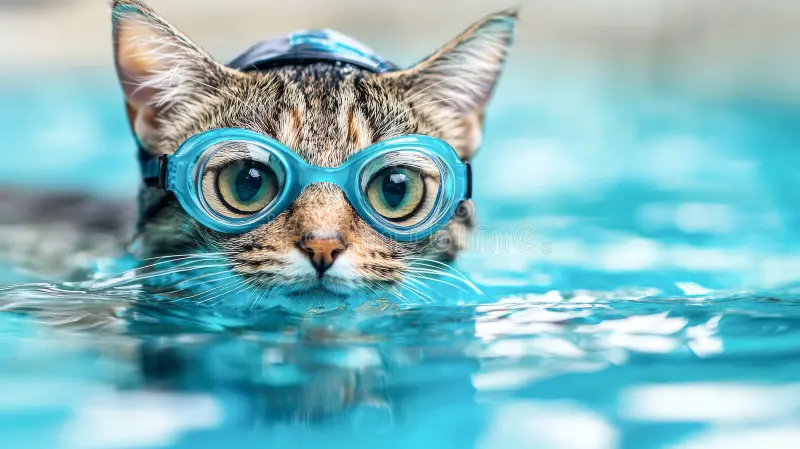
While every cat is different, not many of our feline friends regularly jump into water ready to have a good time. In fact, with the exception of a short list of specific cat breeds, cats have a reputation for hating water.
They’re not like dogs that excitedly jump into lakes and rivers to splash around, and anything bigger than a puddle might set a cat on edge. This is normal cat behavior, but it’s also misleading information when considering whether or not cats can swim.
Some people assume cats avoid water because they can’t swim. But no matter how much your cat resists bath time, their feelings about water have nothing to do with their ability to swim. It might seem hard to believe after watching your cat desperately claw their way out of a tub, but swimming is a natural instinct for all felines. Your cat knows how to swim whether or not they’ve ever had the chance to practice.
Cats have been domesticated for at least 10,000 years, but before their days of plush pillows and hand-delivered meals, they were 100% responsible for their own survival. They knew how to hunt their own food, stay warm, avoid predators, and get themselves out of dangerous situations.
This included knowing how to swim. While researchers believe the oldest cats came from desert areas and didn’t need to swim often, cats still evolved to instinctively know how to paddle their feet and keep their heads above water. Many wild cats swam across rivers and lakes to track prey, avoid predators, or get to wherever they needed to go.
Even modern-day wild cats are proof that felines are capable of being strong and skilled swimmers. Tigers are known to swim up to 9 miles at a time. Other big cats, including jaguars and lions, sometimes swim in rivers to more easily hunt unsuspecting prey along the bank.
Contrary to popular belief, domestication did not erase swimming from the feline skillset. Domestic house cats, no matter how pampered, know how to swim when their lives depend on it. Even kittens know how to stay afloat until their little bodies run out of strength (which doesn’t take long).
It’s important to understand, however, that instinctively knowing how to swim isn’t the same as being a good swimmer. Every cat, regardless of breed or experience, knows enough to keep them above water for at least a short time.
Depending on the cat’s age, health, and experience, however, those swimming skills might not take them far. Swimming for a long distance or a long period of time requires tremendous amounts of physical strength, dexterity, and mental fortitude. For this reason, cats are still at risk of drowning.

Ancient cats and modern-day big cats use their swimming skills for both hunting and recreation. People have witnessed tigers frolicking in water like they’re little kids splashing at a public pool. Most house cats, however, swim only when they need to.
Reasons some cats dislike water include:
- Being wet makes their fur heavy and limits their mobility
- Long, thick fur takes a long time to dry
- They don’t like being cold
- Swimming takes a lot of strength and energy
- They can’t forget a previous negative experience
Even one of these reasons is enough to convince a cat that water is best left in the bowl or dripping from the bathroom sink
Some breeds of cats, including the Bengal, Turkish Van, Abyssinian, and Maine Coon, are known for their love of water. A lot of these cats can’t wait for bath time and even enjoy outdoor adventures at swimming holes and on boats. It’s also possible to adopt a mixed breed cat that breaks the mold and delights in a cool dip.
Cats that enjoy water like to both splash and swim. Some of them are strong, graceful swimmers that can cover impressive distances in short amounts of time. In general, though, cats don’t swim for speed. They paddle enough to keep them moving, but they aren’t usually interested in moving fast. For this reason, it’s hard to say how fast an adult cat can swim.
If you happen to have one of these water-loving cats, it can be great fun to watch them romp around in a river, lake, or (preferably non-chlorinated) swimming pool, but it’s important to prioritize water safety. Take these water safety tips seriously if you ever take your cat out to swim.
- Cover your pool or pond when not in use or install alarms and ramps to prevent accidental drowning
- Store pool chemicals in a completely safe and enclosed area
- Don’t let your cat drink too much ocean or pool water
- Consider a pet life vest for long boat trips
- Do your best to dry your cat, especially their ears, after each swim
- Don’t overestimate their swimming abilities; even a strong cat that loves the water could get into trouble